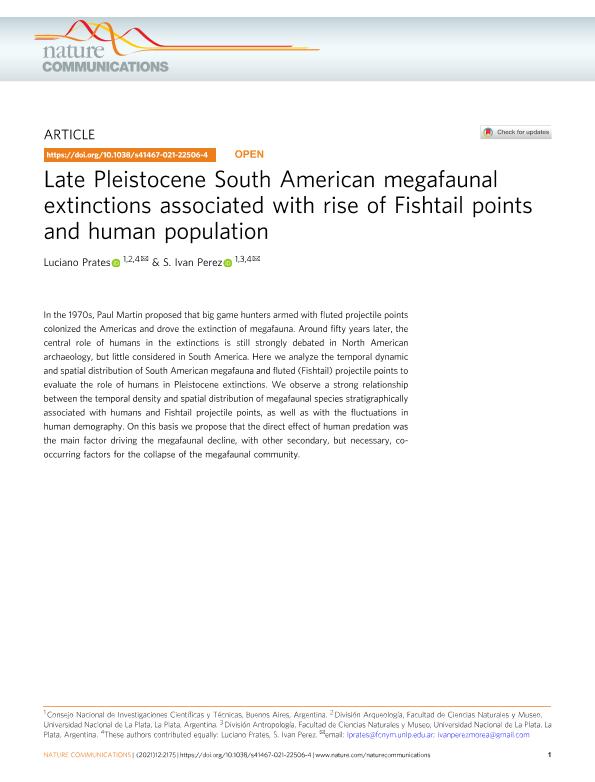Artículo
Late Pleistocene South American megafaunal extinctions associated with rise of Fishtail points and human population
Fecha de publicación:
12/2021
Editorial:
Springer
Revista:
Nature Communications
ISSN:
2041-1723
Idioma:
Inglés
Tipo de recurso:
Artículo publicado
Clasificación temática:
Resumen
In the 1970s, Paul Martin proposed that big game hunters armed with fluted projectile points colonized the Americas and drove the extinction of megafauna. Around fifty years later, the central role of humans in the extinctions is still strongly debated in North American archaeology, but little considered in South America. Here we analyze the temporal dynamic and spatial distribution of South American megafauna and fluted (Fishtail) projectile points to evaluate the role of humans in Pleistocene extinctions. We observe a strong relationship between the temporal density and spatial distribution of megafaunal species stratigraphically associated with humans and Fishtail projectile points, as well as with the fluctuations in human demography. On this basis we propose that the direct effect of human predation was the main factor driving the megafaunal decline, with other secondary, but necessary, co-occurring factors for the collapse of the megafaunal community.
Archivos asociados
Licencia
Identificadores
Colecciones
Articulos(CCT - LA PLATA)
Articulos de CTRO.CIENTIFICO TECNOL.CONICET - LA PLATA
Articulos de CTRO.CIENTIFICO TECNOL.CONICET - LA PLATA
Citación
Prates, Luciano Raúl; Perez, Sergio Ivan; Late Pleistocene South American megafaunal extinctions associated with rise of Fishtail points and human population; Springer; Nature Communications; 12; 1; 12-2021; 1-11
Compartir
Altmétricas




